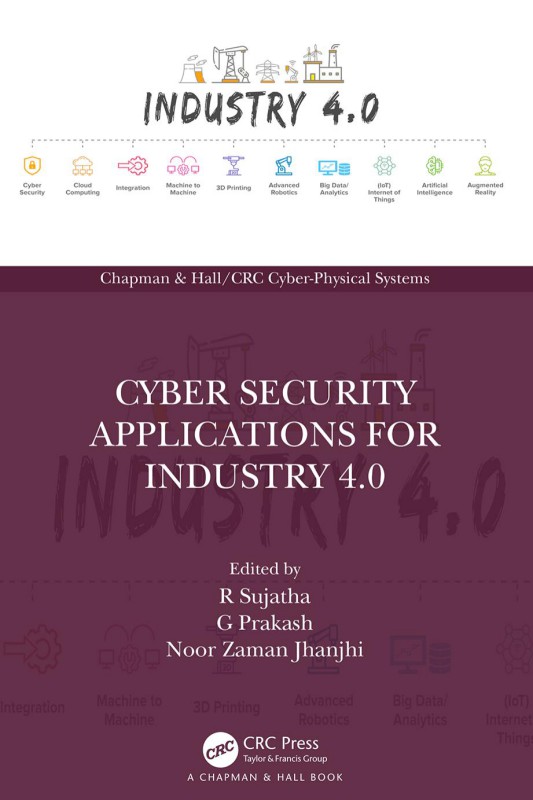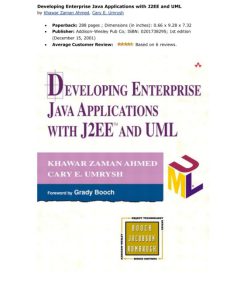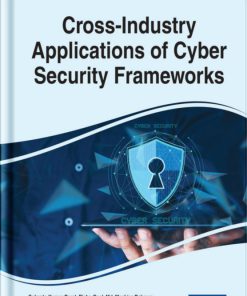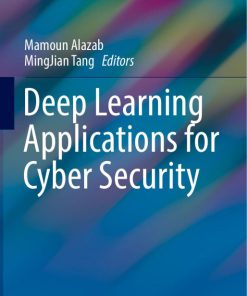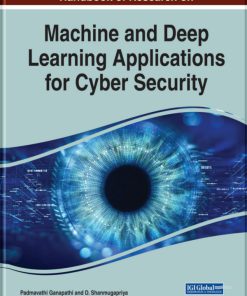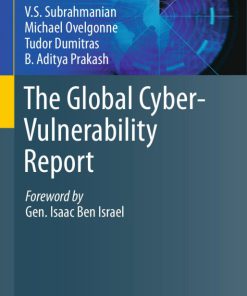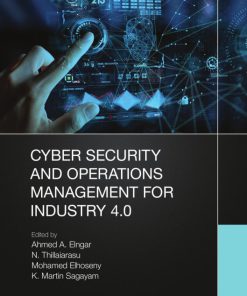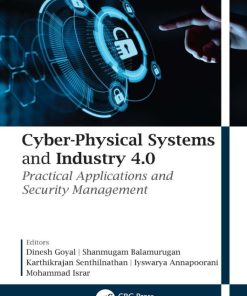Cyber Security Applications for Industry 40 1st edition by Sujatha, Prakash, Noor Zaman Jhanjhi 1000738566 9781000738568
$50.00 Original price was: $50.00.$25.00Current price is: $25.00.
Authors:Edited by R Sujatha , Series:Cyber Security [361] , Author sort:Sujatha, Edited by R , Languages:Languages:eng , Published:Published:Aug 2022 , Publisher:CRC Press , Comments:Comments:This book provides integrated features of various disciplines in Computer Science, Mechanical, Electrical, and Electronics Engineering. It is primarily aimed at industry professionals, academicians and researchers for better understanding of the secure data transition between the Industry 4.0 enabled connected systems.
Cyber Security Applications for Industry 4.0 1st edition by R Sujatha, G Prakash, Noor Zaman Jhanjhi – Ebook PDF Instant Download/DeliveryISBN: 1000738566, 9781000738568
Full download Cyber Security Applications for Industry 4.0 1st edition after payment.
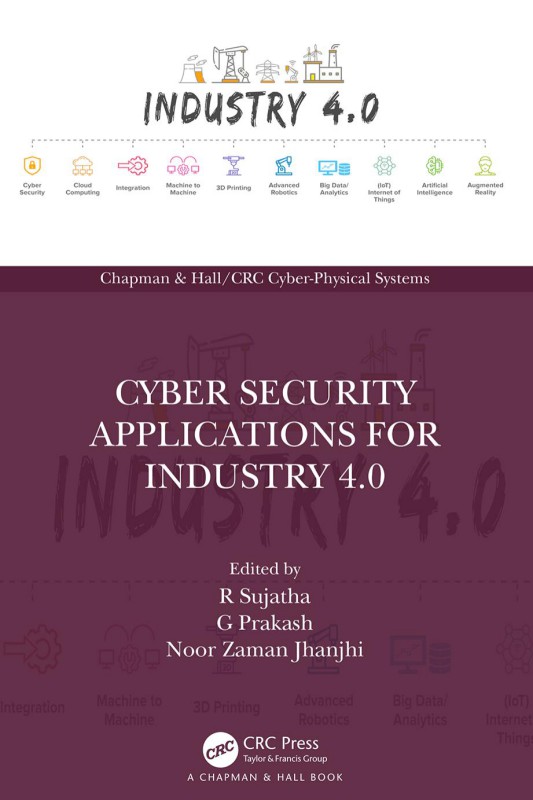
Product details:
ISBN-10 : 1000738566
ISBN-13 : 9781000738568
Author : R Sujatha, G Prakash, Noor Zaman Jhanjhi
Cyber Security Applications for Industry 4.0 (CSAI 4.0) provides integrated features of various disciplines in Computer Science, Mechanical, Electrical, and Electronics Engineering which are defined to be Smart systems. It is paramount that Cyber-Physical Systems (CPS) provide accurate, real-time monitoring and control for smart applications and services. With better access to information from real-time manufacturing systems in industrial sectors, the CPS aim to increase the overall equipment effectiveness, reduce costs, and improve efficiency. Industry 4.0 technologies are already enabling numerous applications in a variety of industries. Nonetheless, legacy systems and inherent vulnerabilities in an organization’s technology, including limited security mechanisms and logs, make the move to smart systems particularly challenging. Features: Proposes a conceptual framework for Industry 4.0-based Cyber Security Applications concerning the implementation aspect Creates new business models for Industrialists on Control Systems and provides productive workforce transformation Outlines the potential development and organization of Data Protection based on strategies of cybersecurity features and planning to work in the new area of Industry 4.0 Addresses the protection of plants from the frost and insects, automatic hydroponic irrigation techniques, smart industrial farming and crop management in agriculture relating to data security initiatives The book is primarily aimed at industry professionals, academicians, and researchers for a better understanding of the secure data transition between the Industry 4.0 enabled connected systems and their limitations
Cyber Security Applications for Industry 4.0 1st Table of contents:
1 A Detailed Investigation of Popular Attacks on Cyber Physical Systems
1.1 Introduction: Background and Driving Forces
1.2 Literature Survey
1.3 Threats and Popular Attacks
1.3.1 Ransomware Attack
1.3.2 Social Engineering Attack
1.3.3 DDoS Attack
1.3.4 Man in the Middle Attack
1.4 Limitations
1.5 Security Measures
1.6 Future Direction
1.7 Conclusion
References
2 Applying Agile Practices in the Development of Industry 4.0 Applications
2.1 Introduction
2.2 Industry 4.0 Technology
2.2.1 Internet of Things
2.2.2 Augmented Reality/Virtual Reality
2.2.3 Big Data and Analytics
2.2.4 Autonomous Robots
2.2.5 Cybersecurity
2.2.6 Cloud Computing
2.2.7 Additive Manufacturing
2.2.8 Simulation
2.2.9 System Integration
2.3 Challenges in Development
2.4 Agile Methodology
2.4.1 User Stories
2.4.2 Kanban
2.4.3 Sprint/Iteration
2.4.4 Daily Stand-Up
2.4.5 Sprint Review and Retrospective
2.5 Agile Practices in Industry 4.0
2.6 Discussion
2.7 Conclusion
References
3 A Review of Security Vulnerabilities in Industry 4.0 Application and the Possible Solutions Using Blockchain
3.1 Introduction
3.2 Components of Industry 4.0
3.2.1 CPS and IoT
3.2.2 Big Data and Analytics
3.2.3 Cloud Computing
3.2.4 Edge Computing
3.2.5 Internet of Services
3.2.6 Autonomous Robot, Simulation, and Augmented Reality
3.2.7 Additive Manufacturing and Machine to Machine
3.3 Inherent Challenges for Industry 4.0 Components
3.3.1 Cyber-Physical System, IIoT, and Cyber Security
3.3.2 Cyber Security
3.3.3 Cloud Computing and Big Data Analytics
3.4 Impact of Industry 4.0 Applications and Projects
3.4.1 Impact of Industry 4.0 Applications
3.4.2 Smart Projects for Industry 4.0
3.5 Application of BCT to Industry 4.0
3.5.1 Blockchain Frameworks
3.5.2 Threats from Blockchain Components
3.6 Conclusion
References
4 The Role of Cutting-Edge Technologies in Industry 4.0
4.1 Introduction
4.2 Literature Review
4.3 The Evolution of Industry 4.0
4.4 An Overview of Cutting-Edge Technologies and AI
4.4.1 Natural Language Processing
4.5 IoT and Cutting-Edge
4.6 Blockchain and Cutting-Edge
4.7 Challenges and Future Implementation
4.8 Discussion
4.9 Conclusion and Future Work
References
5 Secure IoT Protocol for Implementing Classified Electroencephalogram (EEG) Signals in the Field of Smart Healthcare
5.1 Introduction
5.2 Existing Methods
5.3 EEG Signals in IoT Environment
5.3.1 Basics of EEG Signals
5.3.2 IoT Environment
5.4 Classification Method
5.5 Secure IoT Protocol
5.5.1 Basic MQTT Protocol
5.5.2 MQTT Protocol with Username and Password
5.5.3 MQTT Protocol in IoT Arduino Environment
5.5.4 MQTT Protocol with Mosquitto Broker
5.5.5 MQTT Protocol with SSL/TLS Configuration
5.5.6 MQTT Protocol with Cloud Environment
5.6 Conclusion
References
6 Cybersecurity for Critical Energy Protection in Smart Cities
6.1 Introduction
6.2 Cybersecurity
6.2.1 Advantages of Overseeing Cybersecurity
6.3 Cybersecurity in Smart Cities
6.3.1 Resource, Information, and Identity Threat
6.3.2 Man-in-the-Middle Assaults
6.3.3 Hijacking Gadgets
6.3.4 Physical Disruption
6.3.5 Ransomware
6.3.6 Disseminated Denial of Service
6.4 Key Cybersecurity Steps
6.4.1 Give Cybersecurity Training to Staff
6.4.2 Focus on Resources and Make Access Control Arrangements
6.4.3 Create a Cyber Episode Reaction and Recuperation Plan
6.4.4 Put Resources into Calamity Recuperation, Reaction, and Occasion the Executive’s Innovation
6.4.5 Secure Basic Framework
6.5 Energy Production in Smart Cities
6.6 Microgrids
6.6.1 Physical Layer
6.6.2 Sensor and Actuator Layer
6.6.3 Communication Layer
6.6.4 Management and Control Layer
6.7 Cyberattacks on the Energy Sector
6.7.1 The Fast RateofTechnological Advancement
6.7.2 The Expanding Refinement of Cyber Assaults
6.7.3 The Area’s Allure as a Cyber Target
6.8 Steps for Protecting Our Energy from Cyberattacks
6.9 Renewable Energy in Smart Cities and Cybersecurity
6.10 Challenges in Cybersecurity
6.10.1 Ransomware
6.10.2 IoT Attacks
6.10.3 Cloud Attacks
6.10.4 Phishing Attacks
6.10.5 Blockchain and Cryptocurrency Attacks
6.10.6 Software Vulnerabilities
6.10.7 Machine Learning and AI Attacks
6.10.8 BYOD Policies
6.10.9 Insider Attacks
6.10.10 Outdated Hardware
6.10.11 Malware Spreading
6.11 Challenges of Cybersecurity in Smart Cities
6.12 Challenges of Cybersecurity in Renewable Energy
6.13 Conclusion
References
7 Emerging Industry Revolution IR 4.0 Issues and Challenges
7.1 Introduction
7.2 Literature Review
7.3 Industry 4.0 Concept and Its Significance
7.4 I4.0 Enabling Technologies
7.5 Industry 4.0 Issues and Challenges
7.6 Discussion
7.7 Conclusion
7.8 Future Work
References
8 IIoT-Based Secure Smart Manufacturing Systems in SMEs
8.1 Introduction
8.2 Internet of Things
8.3 Industrial Internet of Things
8.4 IIoT Architecture
8.4.1 Device Layer
8.4.2 Network Layer
8.4.3 Service Layer
8.4.4 Content Layer
8.5 Benefits of the IIoT
8.6 Challenges of Widespread IIoT Implementation
8.7 Industry 4.0
8.8 History of Industry 4.0
8.8.1 First Industrial Revolution (Industry 1.0)
8.8.2 Second Industrial Revolution (Industry 2.0)
8.8.3 Third Industrial Revolution (Industry 3.0)
8.8.4 Fourth Industrial Revolution (Industry 4.0)
8.9 Pros and Cons of Industry 4.0
8.9.1 Pros
8.9.2 Cons
8.10 IIoT in SMEs
8.11 Smart Energy Manufacturing Systems
8.12 Smart Grid
8.13 Microgrid
8.14 Impact of Industry 4.0 on Smart Manufacturing
8.15 Advantages and Disadvantages of Smart Manufacturing
8.15.1 Advantages
8.15.2 Disadvantages
8.16 Conclusion
References
9 The Role of Cybersecurity in Smart Cities
9.1 Introduction
9.2 Emerging State-of-the-Art Technologies for Smart Cities
9.2.1 Cloud Computing
9.2.2 Big Data
9.2.3 IoT
9.2.4 RFID
9.2.5 WSN
9.2.6 4G and 5G
9.3 Applications for Smart Cities and Cybersecurity
9.4 Proposed Framework of Cybersecurity and Smart Cities
9.5 Open Issues and Challenges
9.6 Conclusion
9.7 Future Work
References
10 A Theoretical Framework on Enhancing Cloud Storage Security through Customized ECC Key Management Technique
10.1 Introduction
10.2 IaaS Key Management Concerns
10.3 Related Work
10.4 Problems Identified
10.5 Case Study Analysis – Amazon Web Services Key Management Service
10.5.1 Centralized Key Management
10.6 Proposed Theoretical Framework
10.6.1 Static Key Usage in Symmetric and Asymmetric Encryptions
10.6.2 AWS Cryptographic Key Establishment
10.6.3 Customized Dynamic Key Management Service Using Blockchain-Based ECCDH Scheme
10.7 Conclusion and Future Work
People also search for Cyber Security Applications for Industry 4.0 1st:
what is industry 4.0 applications
industry 4.0 cybersecurity
industry 4.0 security
applications of ai in cybersecurity
bs cybersecurity and information assurance

